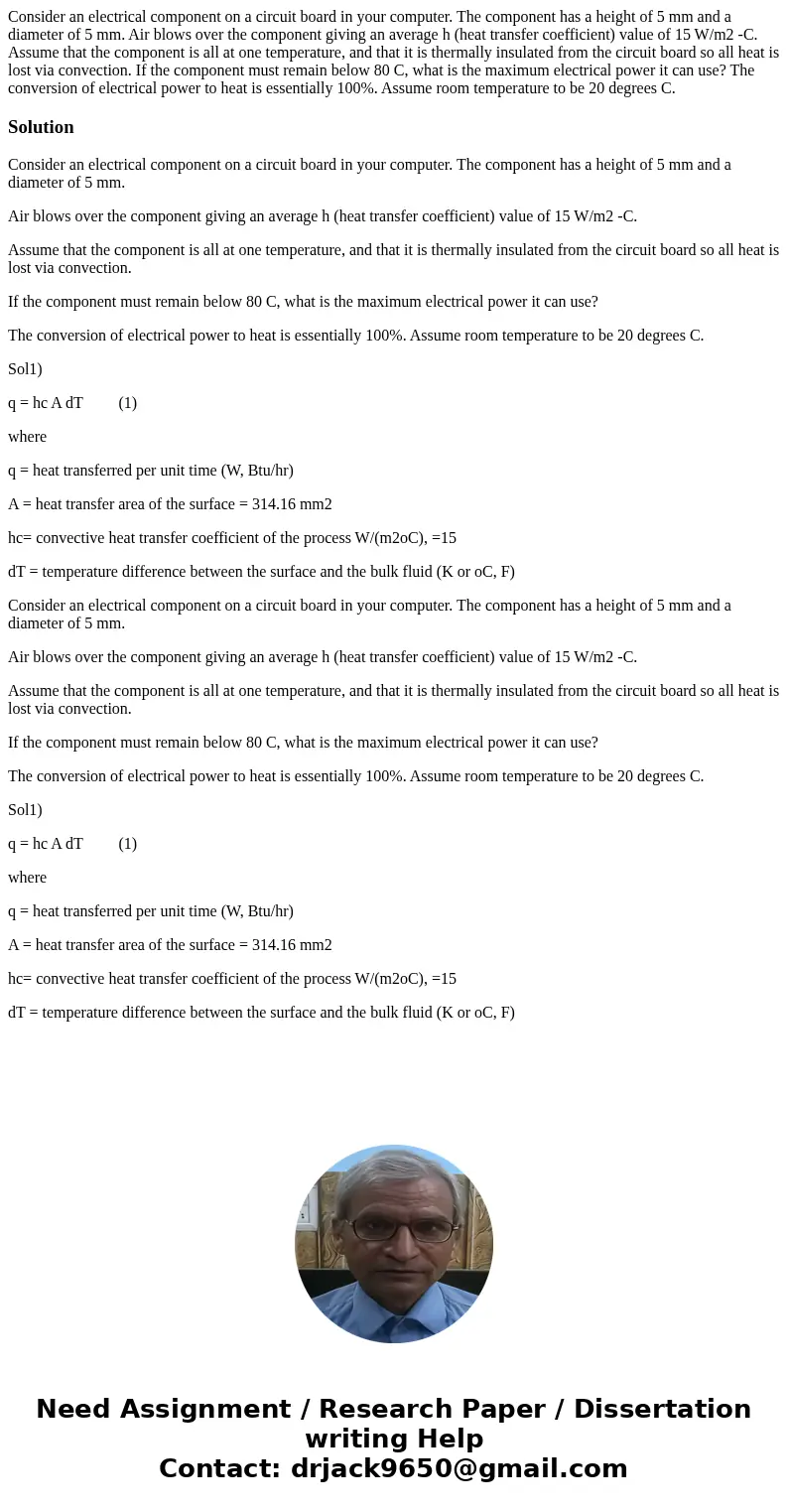Consider an electrical component on a circuit board in your
Consider an electrical component on a circuit board in your computer. The component has a height of 5 mm and a diameter of 5 mm. Air blows over the component giving an average h (heat transfer coefficient) value of 15 W/m2 -C. Assume that the component is all at one temperature, and that it is thermally insulated from the circuit board so all heat is lost via convection. If the component must remain below 80 C, what is the maximum electrical power it can use? The conversion of electrical power to heat is essentially 100%. Assume room temperature to be 20 degrees C.
Solution
Consider an electrical component on a circuit board in your computer. The component has a height of 5 mm and a diameter of 5 mm.
Air blows over the component giving an average h (heat transfer coefficient) value of 15 W/m2 -C.
Assume that the component is all at one temperature, and that it is thermally insulated from the circuit board so all heat is lost via convection.
If the component must remain below 80 C, what is the maximum electrical power it can use?
The conversion of electrical power to heat is essentially 100%. Assume room temperature to be 20 degrees C.
Sol1)
q = hc A dT (1)
where
q = heat transferred per unit time (W, Btu/hr)
A = heat transfer area of the surface = 314.16 mm2
hc= convective heat transfer coefficient of the process W/(m2oC), =15
dT = temperature difference between the surface and the bulk fluid (K or oC, F)
Consider an electrical component on a circuit board in your computer. The component has a height of 5 mm and a diameter of 5 mm.
Air blows over the component giving an average h (heat transfer coefficient) value of 15 W/m2 -C.
Assume that the component is all at one temperature, and that it is thermally insulated from the circuit board so all heat is lost via convection.
If the component must remain below 80 C, what is the maximum electrical power it can use?
The conversion of electrical power to heat is essentially 100%. Assume room temperature to be 20 degrees C.
Sol1)
q = hc A dT (1)
where
q = heat transferred per unit time (W, Btu/hr)
A = heat transfer area of the surface = 314.16 mm2
hc= convective heat transfer coefficient of the process W/(m2oC), =15
dT = temperature difference between the surface and the bulk fluid (K or oC, F)

 Homework Sourse
Homework Sourse